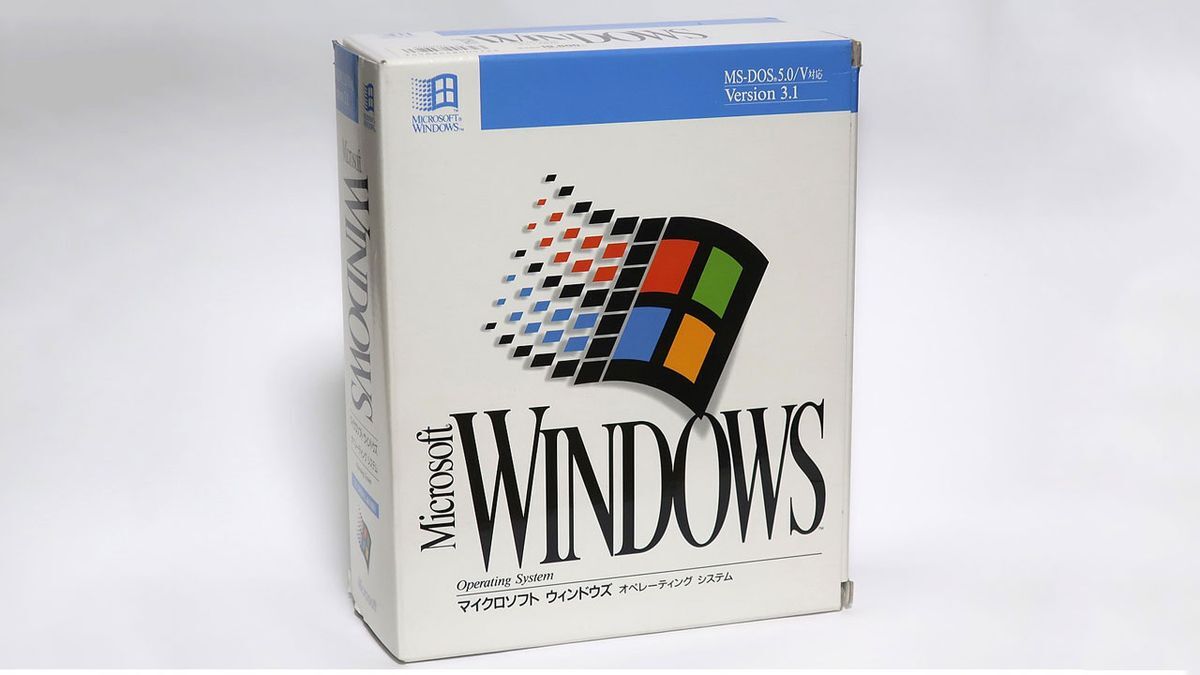- cross-posted to:
- [email protected]
- cross-posted to:
- [email protected]
Southwest Airlines, the fourth largest airline in the US, is seemingly unaffected by the problematic CrowdStrike update that caused millions of computers to BSoD (Blue Screen of Death) because it used Windows 3.1. The CrowdStrike issue disrupted operations globally after a faulty update caused newer computers to freeze and stop working, with many prominent institutions, including airports and almost all US airlines, including United, Delta, and American Airlines, needing to stop flights.
Windows 3.1, launched in 1992, is likely not getting any updates. So, when CrowdStrike pushed the faulty update to all its customers, Southwest wasn’t affected (because it didn’t receive an update to begin with).
The airlines affected by the CrowdStrike update had to ground their fleets because many of their background systems refused to operate. These systems could include pilot and fleet scheduling, maintenance records, ticketing, etc. Thankfully, the lousy update did not affect aircraft systems, ensuring that everything airborne remained safe and were always in control of their pilots.
This is the “can’t get a Word Document macro virus because I use the Corel WordPerfect Document type” kind of energy.
Ah, nothing’s wrong with WordPerfect, honestly. Still better than Word.
Does it run on Wine?
Funny the page recommends OpenOffice when the entire FOSS community has moved on to LibreOffice in a middle-finger to Oracle.
Besides, OO and LO are shit. AbiWord is where it’s at.
No, it doesn’t, because Corel didn’t buy WordPerfect until 1996.
Edit: man, y’all really don’t understand either jokes or the linear progression of time.
I miss our Corel word perfect :(
It still exists. You can use it
Holy crap, they are serious. I though I was on [email protected] for a minute. I sure hope none of those computers are connected to the internet. There’s a massive number of vulnerabilities in windows 3.1 and windows 95.
The “source” is a tweet from a random dude, it’s almost certainly not true.
But how many people are looking for Windows 3.1 anything today?
Well I suppose now there might be more
Windows 3.1 doesn’t even come with a TCP/IP stack. It’s actually pretty safe.
As long as that’s the exact version they’re using. Windows for workgroups 3.11 has networking.
Yep. I remember - despite the fact it was old even then - building and connecting a Win 3.11 machine to a TCP/IP office network as a proof of concept back in 2000 or so. I might have even installed Netscape on it. I don’t remember clearly now, but I assume the parts for the computer came out of the spares pile, and were soon recycled back into other machines.
Bold of you to assume any of the “experts” writing about this know what a TCP/IP stack is
Windows 3.1? You fancy kids, and your modern operating systems! What’s wrong with Windows 1.0???
Why not Quick and Dirty Operating System?
In before OS/2
inb4 os/5
That makes fuckall sense.
Windows 3.1 not being updated by Microsoft has nothing to do with Crowdstrike rolling out an update to their Falcon Sensor software including a file with 42kB of zeroes.
On Windows 3.1 you probably can’t run Falcon Sensor, so in that way it could be related. But it seems way more likely that Southwest Airlines simply didn’t use Falcon Sensor on their normal Windows 10 or whatever clients.
There are probably competitors to Crowdstrike, at least some companies would be customers to one of them.
Hang on, if you’re using CrowdStrike but not getting the updates, then why are you using it at all?
Because none of these journalists have a basic understanding of what actually happened lol
This software is shit Bob! What should we do Bob?
Well Bob, we should find something compatible with shit!
Bob, I think I got it! I got this other shit software!
Genius Bob! Just Genius! 😎
🤯
The fact that they’re running 3.1 is not something to be proud of. They’re probably extremely vulnerable to any other attack.
Quite the opposite.
Please explain. I’ll make 🍿
Microsoft’s Wolverine for the TCP stack was not available until Windows 3.11. An argument could be made that these systems are defacto air-gapped as they cannot communicate with modern networking.
Youre assuming the article is using “windows 3.1” to mean the exact version of the OS, instead of just the proper name of the OS overall. That probally unlikley.
Since lacking a network stack tends to limit usability, unless the systems are intentionally air gapped they likely are on windows 3.1.1 or later. Based on Southwest extensively documented and decades long IT neglect that landed its current COO in front of Congress for a previous days long outage, i doubt the systems are intentionally airgapped, as that implies a working and well funded IT department.
Just because it doesn’t have TCP/IP doesn’t mean there isn’t networking. Networks existed before the Internet and its Internet Protocol after all. It wouldn’t be so much air gapped as so archaic that only the most targeted attacks would work, and only if there is an infected PC acting as an intermediate between the Internet and ye olde network. Chances are it was never connected to the modern Internet as the technologies just aren’t compatible.
Old doesn’t mean secure. Those old systems have had decades since the last security patch. Even then computer security was barely a consideration for the developers.
I am not saying it is, normally old systems are the least secure. The bit you’re not getting is that this system is almost certainly air gapped, just not by choice. It can’t work with modern networks. It can’t work with modern viruses. Any exploit a modern hacker would think to use probably doesn’t exist yet. It’s a bit like trying to break someone’s car by putting sugar in the fuel, except they ride a horse. Do you get it yet?
I thought I was eating an onion… Nope.
This is both awesome and frightening for many reasons
Ahhhh, the Technology Trap. The modern world has become a mere handful of bad zeros away from having this house of cards crash down and kill almost everyone.
Technology is great and makes our modern society comfy and great. But it also can be the Sword of Damocles. When will that slender thread break and kill us all?
Or, for your consideration, could it perhaps be because they don’t use crowdstrike?
Yeah what a badly written article, with awful takeaways.
I feel like every article out there is missing this and keeps blaming Windows Update vs an update pushed to a specific piece of software by a third-party developer. I get end-users not understanding how things work but tech writers should be more knowledgeable about the subject they write about for a living.
My Linux servers weren’t affected either. I think it’s because of Windows 3.1
My wife shared this with me yesterday, but I didn’t see it:

Somebunny is gonna learn those things aren’t windows-based today!
My old thermostat was basically two teaspoons of mercury that would expand and contract with the temperature to short out two leads. They didn’t let me keep it when I got a new one, but I got the dumbest one they had.
I got a new HVAC and smart thermostat about a week ago. After researching, I decided to hook thermostat to wifi and download app. Mostly all the app does is duplicate the same functionality that the thermostat controls have. I find it handy to have a remote control for the thermostat.
OTOH I decided not to hook up a new washing machine to wifi and use app. It duplicated the functionality of the appliance controls also, but there was no point in having remove controls for a washing machine.
The critical thing is that an appliance needs to be fully functional without needing to use wifi and certainly not a phone app.
Just yesterday I had that exact “Tech enthusiast vs tech worker” meme play out. I wanted a timer to control the electrical outlet for an aquarium bubbler. Saleswoman really wanted to sell me this “smart” controller with an app that can program the outlet.
Me:“What happens when the app stops working?”
(saleswoman is frantically flipping the box over for answers)
Her:“…maybe…it keeps the existing timer?”
For only way more time and money, you can buy a zigbee smart plug and a vendor agnostic zigbee hub flashed with FOSS, or you can buy a esp-based board, wire it up with a relay, and flash it with something like esphome.
Sure, it’s way more money and hours of work (cumulatively), but it won’t lose support!
I just bought a bunch of TP Link equipment I knew was compatible and loaded up Home Assistant onto a Raspberry Pi. Best of both worlds
I bought some TP link Kasa plugs and a couple of years later when I wanted some more the Kasa brand was discontinued and replaced by Tapo in Sweden. Tapo and Kasa only work with their own separate app so I would have had to have two separate apps even though both were TP link. Never bought any more smart plugs.
Aw man, that’s a shame! Kasa is still around in the US, I only got mine a couple months ago. They do seem to offer both, so I wonder if Kasa is on the way out here too
I’ve got about six smart plugs that all stopped working because of lack of support. I am no longer interested in smart plugs.
Shelly makes devices that are compatible with ESPHome and Tasmota, solving this problem.
Yeah, what? 3.1 not getting updates has nothing to do with this. Software developed for 3.1 can still be updated. This article is just silly.
The interesting thing here is wondering why they never upgraded. Perhaps managing flights digitally just hasn’t changed much since the early nineties and they never needed anything else?
Likely the same reason why banks and other financial institutions still use COBOL and Fortran code written in the 1970s or earlier on archaic mainframes: Top management decided at some point it was too expensive to rewrite everything from scratch in some modern language for modern hardware, so they just limp along with what they have.
A 16-bit app written for Windows 3.x would almost certainly have to be rewritten for modern, 64-bit Windows.
While i figured the cost would be a factor, i just figured they were sticking with a system that works. If it serves their needs effectively and reliably, why change it?
Edit: answered my own question–it doesn’t work anymore, and that’s why it needs to be changed
😂👌🏻nice edit
It isn’t even a Windows update, but a software update.
I’m inclined to believe this post, claiming this article is BS https://mastodon.social/@jplebreton/112825798853315264
Yes, the update bricked the systems, meaning the software that powers their business was unaccessible, reinstalling any version of windows would not restore the software built on top of the os. Thus why it became a huge ordeal rather than a simple update push from Microsoft, a bricked system can’t receive a fix remotely.
Everything we know about this is that it was a disaster waiting to happen. Why the heck aren’t the airlines using Linux instead of Windows for critical stuff? How about something like…Chrome OS? Then you don’t need CrowdStrike because your OS is already secure because of the built in VMs and because it is Linux. Pay google for support and no updates unless there is something critical.
edit: Lots of Microsoft lovers here lol. And missing the point which is that using the most well known consumer OS for critical stuff like keeping flights going is begging for trouble.
The disaster likely happened because Crowdstrike didn’t do any phased rollouts or testing, which would have picked up a glitch like these before it could brick countless millions of systems. Blaming Microsoft for what is most likely gross negligence from a major cybersecurity firm is downright disingenuous.
Also, recommending an overglorified web browser baked into an OS which can only run web and Android applications to run critical infrastructure is downright laughable, ESPECIALLY when Google are known for their downright nonexistent customer support.
People use Windows because it’s the most well-known and used OS on the market, and because Microsoft is a multi-billion dollar tech giant with a dedicated customer support and tech team to fix issues posthaste.
blaming Microsoft
I’m not blaming Microsoft. I am blaming companies for using Microsoft for critical systems.
Also, recommending an overglorified web browser baked into an OS which can only run web and Android applications to run critical infrastructure is downright laughable,
You not understanding that ChromeOS is a highly secure Linux computer is that can run any Linux program is downright laughable ignorance.
ESPECIALLY when Google are known for their downright nonexistent customer support.
Their software is way too widely used to provide you with free customer support. Microsoft is no different.
Mainly people are down voting you because Linux had also been affected by Crowdstrike before. Only a few months ago at that. There aren’t any more defenses in Linux systems against this kind of problem than there are in Windows ones. This isn’t even strictly speaking a security issue either. It’s more like a bug in critical software that just happens to be security related. It’s a bit like when that Grub update broke some people’s arch setups.
It’s not that Linux can’t have security problems. I still remember the very first internet virus in 1987 that traveled thru Unix machines. But Windows is the worst OS for critical systems precisely because it is the most common OS. Anything is better than windows. Linux, MacOS, or even an old IBM mainframe OS and those awful tn3270 terminals. Also, Chrome OS in particular has VMs instead of other VMs. It really is designed to be much more secure than Windows.
It’s more like a bug in critical software that just happens to be security related.
And so the cure is the same as the disease. Or actually worse in this case. The very fact that systems were constantly updated was itself the problem rather than the solution to the problem. How did nobody realize this was going to happen sooner or later?
Linux had also been affected by Crowdstrike before.
I’m guessing Crowdstrike issues a lot more Windows updates than Linux updates?
I’m guessing Crowdstrike issues a lot more Windows updates than Linux updates?
Not really. Linux is used for critical servers everywhere. No reason to update it less often.
It’s not that Linux can’t have security problems. I still remember the very first internet virus in 1987 that traveled thru Unix machines. But Windows is the worst OS for critical systems precisely because it is the most common OS. Anything is better than windows. Linux, MacOS, or even an old IBM mainframe OS and those awful tn3270 terminals. Also, Chrome OS in particular has VMs instead of other VMs. It really is designed to be much more secure than Windows
This isn’t a hacking attempt. It’s not a security breach. None of the “Windows is more common” stuff is actually valid in this case. The fact it’s not actually true is even more funny. When it comes to servers and smartphones, and the total number of devices in general, Linux outnumbers Windows. Linux isn’t actually niche in the slightest, only purists running Arch or Ubuntu think that because they ignore any Linux they don’t like, like Android.
You also don’t understand anything about ChromeOS security either. They don’t use VMs for system security. Early Chromebooks actually had virtualization disabled! Sandboxing and virtualization aren’t the same thing. The reason it’s secure is largely because it can’t do anything, it uses an a/b root system, and it has secure boot by default. It’s not that fancy anymore.
Chrome the web browser also has sandboxing on Windows, and modern Windows uses secure boot. Edge and Chrome have the same foundation btw. What it’s missing is the immutable a/b root system, and the fact Windows allows running arbitrary executables when ChromeOS doesn’t. There are actually tools for making Windows immutable, and with group policy or things like S mode you can restrict who can run what executables. Meaning with the right settings it’s almost as secure as ChromeOS. Even more funny Windows actually does use virtualization based security. So you have that backwards too.
Stop talking about shit you don’t understand and learn about it instead.
This isn’t a hacking attempt.
No but it is the result of trying to stop hacking attempts.
They don’t use VMs for system security.
They do. A major reason they use them is to make ChromeOS way more secure than windows.
Linux isn’t actually niche in the slightest
It’s fragmented. There is no single version
Stop talking about shit you don’t understand and learn about it instead.
Stop being a jackass and learn to communicate in civilized fashion.
with group policy or things like S mode you can restrict who can run what executables.
Companies don’t run windows in S mode and every OS has group security.
None of the “Windows is more common” stuff is actually valid in this case.
When I learned that companies are actually letting Cloudstrike download the equivalent of KERNAL MODE code into their critical systems I was dumbfounded. Who could have possibly thought that was a good idea? This was absolutely a disaster that was just waiting to happen.
However, if it happened on Linux, it could have been immediately bypassed.
Automatically reverting the kernel wouldn’t do anything as the kernel nor the module Crowdstrike uses were updated. Rather the file the module reads was updated and replaced with a corrupted version that causes the module to crash when it tries to read it.
There is a great video explaining the basics of what happened here: https://youtu.be/wAzEJxOo1ts?si=_agkbdBHJnhQmbdP
Microsoft already have a mechanism to disable problematic modules on next boot. Problem being that Crowdstrike registers itself as an essential driver, as they don’t want the system to boot without it for security reasons.
You keep saying Chrome OS uses VMs for security. Unless something has seriously changed since I last read up on their security mechanisms they don’t. Maybe something has changed. Do you have any evidence? If not you’re just talking out of your arse.
Sure I’ve got lots of evidence.
https://www.security.org/antivirus/chromebooks/
[There’s no question that, when it comes to viruses and other forms of malware, Chromebooks are safe. How safe? Well, the website CVE Details1 lists just 55 vulnerabilities for Chrome OS. Compare that to 1,111 vulnerabilities for Windows 10, and a whopping 2,212 for Mac’s OS X; with five percent as many vulnerabilities as its closest competitor, it’s a pretty simple matter to declare Chromebook the safest option…there’s no question that Chromebooks are among the most secure computers you can buy]
55 vulnerabiilites for Chrome OS vs 1111 vulnerabilities for Windows. Huge difference.
Rather the file the module reads was updated and replaced with a corrupted version that causes the module to crash when it tries to read it.
Yes it was a ridiculous system to have kernel mode code on the filesystem. Even if a bad pointer didn’t crash the system a hacker could have put in their own code. And yes such a terrible security system would have affected Linux too. But with ChromeOS, the system is already secure. No need to use a terrible security system like Cloudstrike in the first place.
No you don’t have any evidence at all. You were specifically speaking about Chrome OS using VMs inside VMs. That article doesn’t mention VMs once.
I never once disputed that it was more secure than an average Windows installation, because frankly that’s obvious. What you don’t seem to understand is what can be done to lock down modern Windows and Linux systems.
Yes it was a ridiculous system to have kernel mode code on the filesystem. Even if a bad pointer didn’t crash the system a hacker could have put in their own code. And yes such a terrible security system would have affected Linux too. But with ChromeOS, the system is already secure. No need to use a terrible security system like Cloudstrike in the first place.
For one the same article you are referencing talks about using anti-malware on ChromeOS as Chrome OS isn’t malware proof. Though I don’t think it’s possible for Chrome OS to break so badly from one of these products.
ChromeOS though isn’t actually suitable for running servers like Windows and Linux are. It can’t do nearly the same number of things. It’s a bit like comparing a knife to a safety razor. One is safer for shaving sure, however the other one can be used for cooking, hunting, wood work, etc.
Second all kernel mode code lives on the filesystem. How did you think it worked? On Linux and Windows the kernel itself needs storing somewhere, as do the modules.
You keep showing me again and again that you don’t understand the world of computers and modern IT infrastructure. Do you even have any qualifications or work experience in IT?
Edit: I actually did some research myself. ChromeOS can use a Virtual Machine to run Linux software, but not in it’s default configuration. There is also none of this VMs inside VMs stuff you were talking about. If you want to see virtualization really put to work look at a modern server setup or something like Qubes OS.
If they still use Windows 3.1 and it works, then I do have to wonder about the rest of their security setup.
Windows 3.1 can’t use modern versions of tls which means it’s effectively impossible to network it securely.
You just know there’s an SMB share somewhere with no password, where files filled with unencrypted customer details get dumped for processing by an ancient AS400 server.












